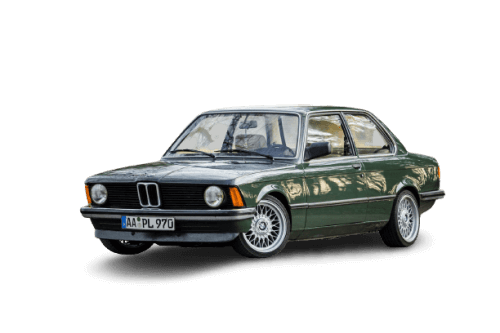Bmw 315 Spare Parts
Bmw 315 Series Spare Parts and maintenance products can be selected to access detailed technical data and the spare parts you are looking for in the 3 Series.
The BMW E21 is the first generation of the BMW 3 Series produced from 1975 to 1983. It was available in various body styles including two-door sedan, four-door sedan, and cabriolet. The E21 was powered by a range of four-cylinder engines, with the most powerful being a 2.0-liter inline-six. The car had a sporty, rear-wheel-drive design and was praised for its handling and performance. It was also known for its high build quality and durability. The E21 was replaced by the BMW E30 in 1983.
The BMW E21 is the first generation of the BMW 3 Series produced from 1975 to 1983. It was available in various body styles including two-door sedan, four-door sedan, and cabriolet. The E21 was designed by Paul Bracq and was a compact executive car that replaced the BMW 02 Series.
The E21 was available with various engines including 1.6-liter, 1.8-liter, and 2.0-liter inline-four engines and a 2.0-liter inline-six engine. The most powerful engine was the 2.0-liter inline-six, producing around 110 horsepower. The car had a sporty, rear-wheel-drive design and was praised for its handling and performance.
The E21 had a unique, angular design that was ahead of its time. It featured a distinctive shark-nose front grille, and the body had clean lines and simple, orderly design elements. The interior was also well-designed with high-quality materials and a simple yet modern layout.
The car was known for its high build quality and durability. It was also praised for its fuel efficiency and low emissions, making it a popular choice among environmentally conscious consumers.
The E21 was replaced by the BMW E30 in 1983. Despite its age, the E21 remains a popular choice among classic car enthusiasts and is still in high demand today.
BMW 315: Historical Development and Features
The BMW 315 made its entry into the automotive world in the 1930s as one of BMW's first compact and economical sedan models. This model helped establish a solid foundation for BMW in automobile manufacturing and elevated the brand's prestige. The historical development of the BMW 315 reflects an important era in automotive engineering and design. In this article, we will examine the development and features of the BMW 315 model from its initial launch to the present day in detail.
Historical Development of the BMW 315
1. Initial Launch and Features (1934):
- Introduction: The BMW 315 was first introduced in 1934. This model is an improved version of the BMW 303 model that BMW launched in 1933.
- Engine: The BMW 315 is equipped with a 1.5-liter six-cylinder engine. The engine produces 34 horsepower, which offers quite good performance according to the standards of that era.
- Design: The vehicle has a long hood, a short rear section, and an elegant exterior design. BMW models of this period had a striking aerodynamic and aesthetic line.
- Technology: The BMW 315 is equipped with an advanced chassis and suspension system. These features enhanced the vehicle's handling and driving comfort.
2. Development Process and Production (1934-1937):
- Production: The BMW 315 remained in production from 1934 to 1937. During this period, approximately 9,765 units were produced.
- Market Success: The BMW 315 garnered significant interest both in Germany and in international markets at that time. The vehicle was preferred especially for its economy and robust structure.
- Improvements: In 1935, small improvements made to the BMW 315 model enhanced engine performance and interior comfort.
3. World War II and Aftermath (1940s):
- Production Halt: The production of the BMW 315 model ended in 1937. However, BMW's automobile production was suspended during World War II and revived in the post-war period.
- Post-War Impact: After the war, BMW entered a restructuring process and focused on developing new models. The legacy of the BMW 315 played an important role in the development of BMW's later compact and economical sedan models.
4. The Legacy of the BMW 315:
- An Iconic Model: The BMW 315 is considered one of the significant milestones in BMW's history. This model is one of the first examples of BMW's mission to produce luxury and performance-oriented vehicles.
- Influence on Modern BMW Models: The design and engineering philosophy of the BMW 315 has influenced the development of later BMW models. Particularly, BMW's success in the compact sedan segment is built upon the legacy of pioneering models like the BMW 315.
Conclusion
The BMW 315 is an important model that solidified BMW's place in the automotive industry and laid the groundwork for the brand's future successes. Introduced in 1934, this model offered features that were ahead of its time in both design and engineering. The historical development of the BMW 315 reflects BMW's ongoing goal of producing innovative and high-quality vehicles. Today's BMW models carry the legacy of iconic vehicles like the BMW 315.
There are no products to list in this category.
 Türkçe
Türkçe
 English
English
 Русский
Русский

